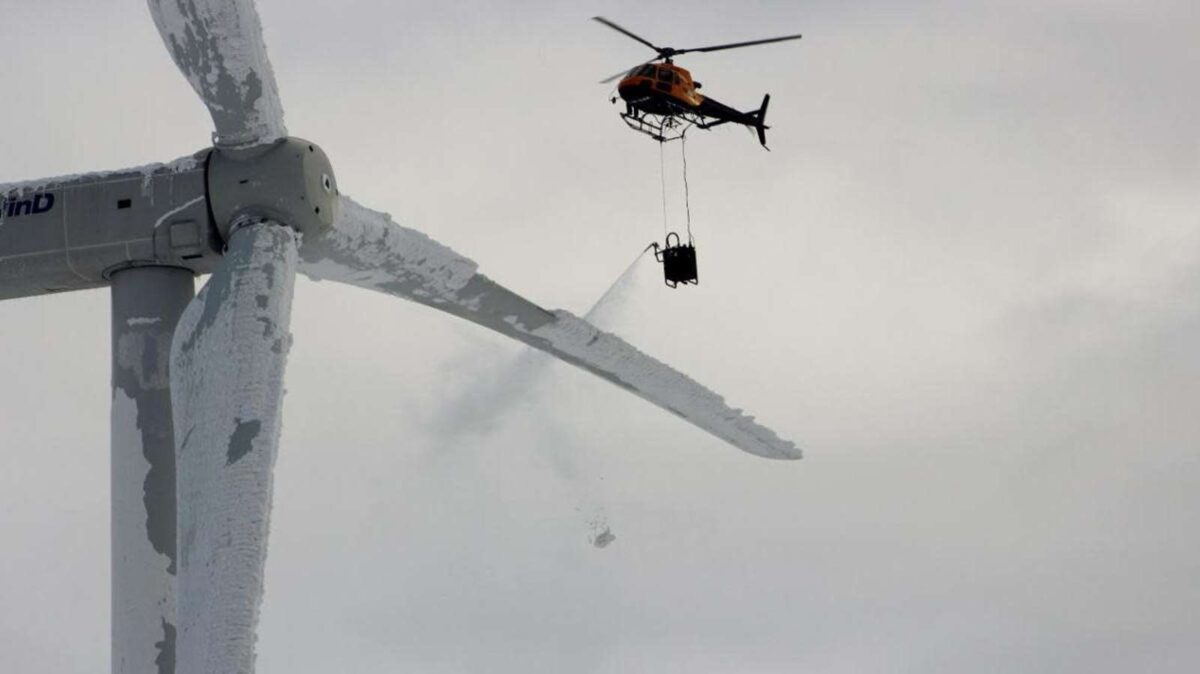
This past weekend an Alberta-like winter storm made its way was across Texas. Bringing record-low temperatures and widespread energy outages across the state. Misinformed officials have pointed the blame at frozen wind turbines and relying too much on renewable energy for causing the widespread energy outages across Texas, which simply isn’t true.
As temperatures dipped 25 degrees below average, power plant generators, wind turbines and pipelines across the state started to freeze and went offline, leading to significant energy production decreases. At the same time, consumers across the state turned up their thermostats to stay warm causing one of the largest shortfalls of energy supply in US history.
Texas has an independent power grid, with few physical connections to other grids, making it difficult to borrow power from other regions. 50% of its power generation comes from natural gas, while the other 50% comes from a mix of coal, nuclear, wind and solar.
SO, WHAT CAUSED THE WIDESPREAD ENERGY OUTAGES ACROSS TEXAS?
Due to the cold, natural gas couldn’t make its way to the generators causing a drop in power generation and controlled rolling blackouts across the state. The Electric Reliability Council of Texas (ERCOT) is tasked with keeping the balance between supply and demand to prevent a catastrophic power grid collapse. As of Wednesday, ERCOT reported that 46 gigawatts of generating capacity were offline.
To put that into perspective, 1 gigawatt will provide enough energy to power 200,000 homes. And Alberta’s entire electricity generation capacity is roughly 16 gigawatts. Out of those 46 gigawatts offline, 28 comes from thermal-based energy consisting of natural gas, coal and nuclear, while the remaining 18 gigawatts is from wind and solar.
In Texas, buildings shed heat, not keep it inside. Power systems are designed to meet the sweltering heat of the summer, not freezing winter temperatures. While the Texas power grid handles blazing hot summers, it was not nearly prepared for the severe weather that plagued the state over the weekend. As the coldest temperatures in decades hit Texas, many misinformed government officials have pointed the blame at frozen wind turbines and relying too much on renewable energy for causing the deadly power failure.
ONLY 10% OF TEXAS’ ENERGY IS RENEWABLE
Renewable energy sources such as wind and solar are intermittent, meaning the energy they produce changes minute-by-minute based on the wind and solar resource available. By mixing renewables with traditional generation sources (nuclear, coal, gas) and battery storage, we manage the intermittency . Only 10% of Texas’s energy comes from wind and solar making it unreasonable to blame renewables for the power shortfall. Echoing this, Governor Abbott took to social media this week to explain the power shortfall that hit Texas. He suggested the blackout was mainly due to coal and natural gas plants’ problems.
https://www.newsweek.com/natural-gas-outage-texas-governor-greg-abbott-1569898
SO HOW CAN ALBERTA’S WINTER TEMPERATURES CAUSE WIDESPREAD ENERGY OUTAGES AND FAILURE OF THE TEXAS ENERGY GRID?
Alberta and Texas’ power grids share many similarities. Both are based around fossil fuel generation, with recent increases in wind and solar energy. Like Texas, we have limited electrical connections to our neighbours, leaving it up to ourselves to manage our reliability.
Out of necessity, Alberta-based generators invest in insulation and cold weather protection to function reliably in winter. Generators in Texas had not made those investments because they rarely need it. In Alberta, we build wind turbines with heating packages included for the gearboxes and other sensitive parts. The blades have special coatings to reduce the buildup of ice, and sometimes have ice melting systems built in. Thermal (gas and coal) generators built inside heated buildings, allows them to function in extreme cold. Solar systems don’t have any moving parts. And produce more energy at colder temperatures, assuming there isn’t too much snow up on the panels. Read more about How Does Winter Affect Solar in our blog.
DO WE NEED TO WORRY?
Most of Alberta’s generators are inside to prevent freezing in the winter and cooling in the summer. However, the vast majority of generators in Texas are outside and not capable of withstanding the recent winter events.
With the recent cold snap that swept through Alberta, there wasn’t even a suggestion of a system emergency. Due to our fuel delivery and power infrastructure designed tho handle those types of extremes. Further south, cold temperatures crippled Texas’s gas and coal generation leading to Widespread Energy Outages across Texas. Renewables are not to blame for these outages.
Solar panels, much like Albertan’s, are able to thrive in the cold.
The events of the past week will provide lessons for the natural gas and electricity sector for years to come.
Head over to our Blog to read more about Solar and what we can do for your business!